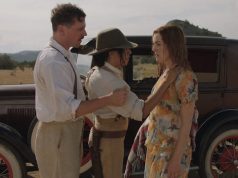It was a middle school in tiny Whitwell, Tenn., that set out to collect 6 million paper clips to commemorate the 6 million Jews killed during the Nazi holocaust. The irony of such an act coming from the rural South is not lost on Whitwellians in “Paper Clips,” the documentary about their project.
One school administrator admits his own father is quick with a racist remark, and he notes that Southerners are easily stereotyped and discriminated against, too. The school’s principal, a tireless, indefatigable old woman named Linda Hooper, says Whitwell (population 1,600) has no Jews, no Catholics, and only a handful of blacks and Hispanics. The project is extraordinary anyway, but particularly considering it’s being spearheaded by a school of white Protestant redneck children. (I use the term “redneck” affectionately, at least as far as you know.)
The paper clip project, which spanned the years 1998-2003, honors lives and changes the lives of the honorers. The film, directed by Elliot Berlin and Joe Fab, neither of whom has any other previous credits, is constructed simply, even amateurishly, but the power of what’s being done comes through loud and clear. It is a case of the material being far better than the movie.
Through footage shot over the years of the project, and with some minor bits apparently re-enacted for the camera, we see the project spring to life in the 8th-grade language arts class. Student research discovered that the paper clip was invented in Norway (who knew?), and that during World War II, Norwegians would wear paper clips on their lapels as a silent protest against Hitler. And thus was the perfect item found to be collected in large numbers, to signify the lives lost in the concentration camps.
Letters are sent to news organizations and to famous people, asking them to contribute paper clips to help them reach their goal of 6 million. The going is slow at first, but encouraging. Celebrities contribute clips, and businesses send masses of them. But still, the pile has reached only 100,000 when the Washington Post and “NBC Nightly News” pick up the story — and from there, it snowballs.
In a matter of months, the school has collected 24 million paper clips (the number would eventually grow to 29 million) and 25,000 pieces of mail from all over the globe. Some people send huge boxes of paper clips bought in bulk; others send just a few, to represent specific people lost in the Holocaust, with accompanying letters to tell their stories. Each successive year of 8th-grade language arts students pick up where the last class left off, collecting and cataloguing all the contributions.
The project takes on a life of its own after a while. A group of Holocaust survivors comes to give first-hand accounts to the school and the town. A husband-and-wife journalist team from Germany become frequent guests, eventually setting out to find a German railroad car to serve as permanent repository for the paper clips and to double as a memorial and museum.
There is some scripted narration in the film, voiced by the participants and sounding wholly unnatural, that detracts from the movie’s otherwise earnest, trustworthy nature. But if the technique is sometimes regrettable, the basic story is unassailably good. It’s hard not to be moved by the survivors’ stories, by the students’ reactions, by the clear way that everyone’s lives are changed for the better by the paper clip project.
B+ (1 hr., 23 min.; )





